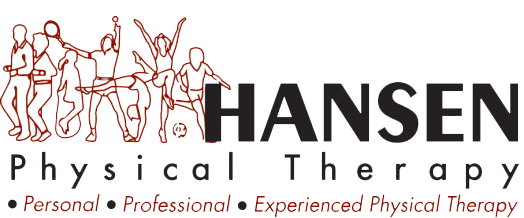1. It’s too late to start, I’m too old, or I’ve been physically inactive for a long time.
It’s never too late to get moving. According to a recent JAMA Network Open study, adding physical activity at any age has benefits. In addition to an increased life span, adding the recommended amount of physical activity for your age and ability to your daily routine can help you manage stress, improve memory and brain function, avoid chronic disease, and much more.
2. It hurts when I ?
Movement is crucial to a person’s health, quality of life, and independence. For some people, pain makes movement a challenge. Pain is one of the most common reasons people seek health care. PTs can help you move better and safely manage your pain.
3. I don’t have time.
Some physical activity is better than nothing. Try to fit in a few short bursts of physical activity a few times a day for a total of 30 minutes. Make sure that the activity increases your heart rate.
Parents should make physical activity part of their family’s daily routine to establish a lifelong commitment to health for their children. Play an outdoor game like hopscotch or tag with the kids (playing is for adults too!). If you’re a caretaker, maintaining your health is vital to being there for those you love. Determine when it makes the most sense to fit small amounts of physical activity into your daily routine. If possible, include movement as part of the care you provide your loved ones. They need to move, too, and you’ll both benefit.
4. I don’t have access to a gym or equipment.
You don’t need a gym membership or fancy equipment to enjoy the benefits of physical activity. You can get plenty in and around your home. Dancing, jogging, walking, climbing stairs, and gardening are all examples of physical activity that you can do without any equipment. To improve your balance, flexibility, and strength, try doing body-weight exercises at least two days a week. Use household objects, e.g., cans, milk jugs, to strengthen muscles.
Try one of these physical therapist- and physical therapist assistant-led home exercise videos.
5. I don’t like to exercise.
Competitive sports and hour-long fitness classes are not for everyone. Physical activity doesn’t have to involve things you don’t like doing to be effective. Discover the types of activities that you enjoy and make them part of your daily physical activity routine.
6. I can’t get motivated, it’s too big of a hurdle, or I don’t know where to begin.
Physical activity releases endorphins, and the feeling of well-being you get after a good workout will become its own reward. To help you get started, offer yourself a small reward each time you are physically active until it becomes a habit. Perhaps looking forward to a special reward will help you reach the recommended physical activity guidelines for your age and ability. Resolve not to watch your favorite TV show unless you have met your daily movement goal. Break down long-term goals into small goals and work on achieving them one at a time. Keep a journal of how you feel after you’ve been physically active and each time you reach a goal.
Set yourself up for success with these tips:
- Make it convenient (walking shoes, hand weights, or resistance bands within easy reach of your desk or where you spend the most time).
- Schedule time for a daily physical activity break and set a calendar reminder.
- Track your steps daily. Increase your step count goal each week.
7. I have a chronic disease, condition, or disability.
Movement is essential for everyone. Whether you use a wheelchair or other assistive device to get around or have mobility challenges due to a chronic condition or a prior injury, there are activities that you can do to challenge your muscles and lungs and improve your health and quality of life. Physical activity can even improve some chronic conditions and prevent others.
8. I’m afraid of hurting myself.
The right activity for you depends on your age, ability, and goals. A physical therapist can help you identify a safe and effective physical activity plan for your age and ability that addresses your fears and helps you reach your goals.
9. I feel out of breath when I move/walk/exercise even a little bit.
It is normal to feel a bit winded when doing physical activities in which you exert yourself more than usual.
If you worry for any reason that physical activity will be unsafe, contact a physical therapist before you begin. After an evaluation, a physical therapist can work with you to find the right duration and type of physical activity to improve your stamina and overall health.
10. I’m tired all the time; I have no energy to exercise.
Research shows that exercise boosts energy levels. Physical activity helps deliver oxygen and nutrients to our tissues and vascular system, and other body functions work more efficiently. Physical activity also improves brain function and mental health, lowers anxiety, promotes better sleep, and aids in weight management. All of these enhance our energy and lead to feelings of well-being.
11. I work out all the time but can’t reach my goal.
Finding the right plan for you is essential to your success. If you are having trouble meeting strength and conditioning goals, despite your best effort, a physical therapist can work with you to identify any issues and design a program to maximize your movement and enhance performance.
